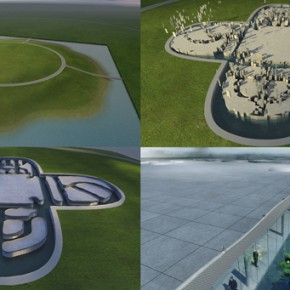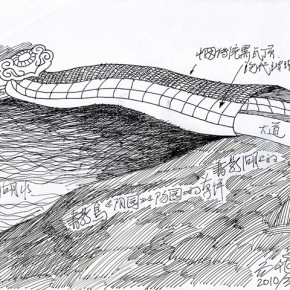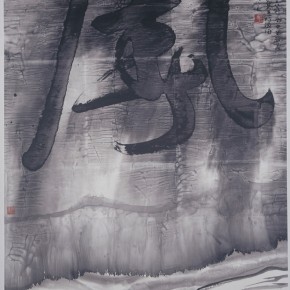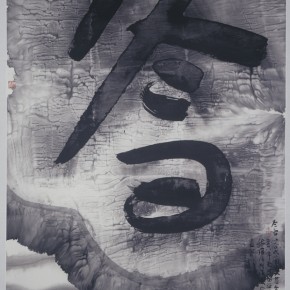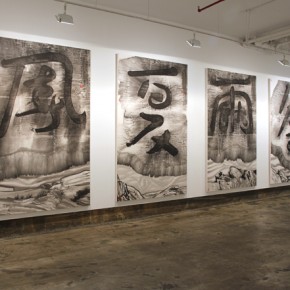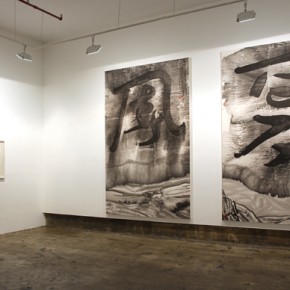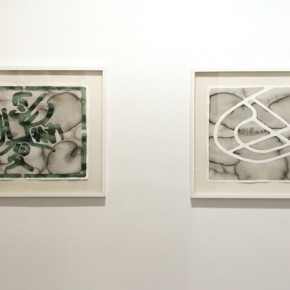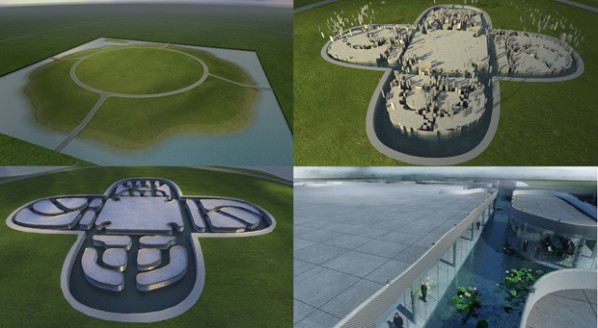
Chambers Fine Art is pleased to present Gu Wenda: Central Park at its gallery in New York. This is his first exhibition at the gallery, being consist of preliminary studies and documentary material for his first venture into garden design and urban planning. When first exhibited in its entirety in Shanghai in 2010, it was as part of the Shanghai Pujiang OCT 10-Year Public Art Project and was known as China Park but the change of name to Central Park not only underscores its relocation to Manhattan but also its centrality to the grand scheme of which it is the most important component.
One of China’s pioneering contemporary artists since the early 1980s when he first came to prominence with his pseudo-calligraphy and mixed-media installations, Gu Wenda is well known for projects such as Forest of Stone Steles: Retranslating and Rewriting of Tang Poetry and United Nations Project, both of which were begun in 1993 and were developed over many years. Underlying Gu’s varied artistic activities since the early 1980s has been what he refers to as “my greater artistic mission and its conceptual themes of east and west, of the traditional and the modern, and my modern and conceptual ideas.” As familiar with western approaches to landscape garden as he is with the great gardening tradition of China, Gu has proposed the creation of “a modern eastern garden” which beyond its possible realization can serve as a model for the future planning of ecologically sound cities throughout China.
Rejecting purely picturesque effects, Gu has designed an ideal scheme in which every element has been carefully considered and is resonant with meaning. Unifying the landscape and architectural features are the Chinese concept of yin and yang and the five elements of Chinese philosophy (wood, fire, earth, metal and water). In the center and at the highest point of the entire scheme is the River Calligraphy Garden which is surrounded by a river and is interlaced with a complex network of narrow canals. Representing the yin aspect, the feminine qualities of the river separate the core complex from the lushly planted green expanse of the Green Forest Calligraphy Garden. Here the masculine character of the trees embodies the yang aspect. On the perimeter of the gardens the four Merit Monument Squares and Gates situate the gardens within a cultural and historical matrix of references.
As dense as the symbolism of every component of Central Park may seem, it needs to be remembered that his visionary scheme is a blue-print for a garden and recreation space located at the heart of a living community. As conscious as Gu is of the park’s sources in calligraphy and the elite culture of China, he is equally concerned that they should merge seamlessly “into popular culture: the entertainment and leisure aspects of the public park, the theme park, and the high end and low-density residential area surrounding the park.” As the users of the park grow familiar with it as their outdoor playground or living room, they will be presented with cultural and historical references in an entirely pleasurable way. Gu’s proposal for Central Park, elitist in inspiration but populist in its aspirations, is visionary in its scope but based in reality.
About the exhibition
Date: November 15 – December 21, 2013
Venue: Chambers Fine Art
Courtesy of the artist and Chambers Fine Art, for further information please visit www.chambersfineart.com.



